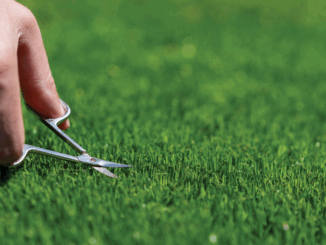By Mary Kilmer, VP of Client Services, and Tara Clark, COO, Red Circle Agency
Direct mail isn’t dead. In most casinos, it still sets the tone for nearly everything else you’ll say that month — email, SMS, in-app, signage, even how hosts talk about Friday night’s promo. This article takes a hard look at how communications and deliverables actually move through a casino — including org charts, workflows, budget flows, and promo docs — then flips the script: What if we built the whole machine around audiences instead of our internal structures?
We’ll walk through a practical, month-by-month communication matrix where the player experience drives what gets made, when it ships, and how it sounds. Expect some sacred-cow poking, a few “oh wow, we do that” moments, and tools you can use Monday morning — whether you sit in creative, operations, or that blurry line between.
Mary: Where the work really happens (and why it feels like cardio)
If you’ve ever schlepped 47-pound “portable” lawn chairs to a guest’s car, smiled for a jackpot photo during a printer jam, spent some time dressed as Mrs. Claus, and loaded a small nation’s worth of offers into your club system — all before lunch — you’re my people.
Casino marketing teams are typically small for the load they carry. Ten people doing the work of twenty. Sometimes five doing the work of ten. When one person leaves, your graphic designer suddenly “also” sends an email. We’re pros at forcing work through the pipeline with
- Responsibility lanes (The “email person” recommends — shocker — email.)
• Promo checklists (Concert? Cue posters, scripts, digital boards, comps.)
• Available-hands triage (“Who’s least buried today?”)
• Emergencies (crab legs AWOL, headline act reroutes, tonight’s occupancy is soft)
All necessary. None of it is audience-first. It’s a to-do list, not a to-who list.
Tara: Your database is a map; your guests are the territory
We adore segmentation, we’re great at it — A/B/C tiers, frequency, ADT, location. But people don’t read like spreadsheets. They read with eyes, habits, and a hair-trigger delete key. The quantity of messages in front of us all is mind-boggling. Your job isn’t just reaching them — it’s being instantly recognizable as “this is for me.” Anything else is lost in the miasma.
That’s why we use personas. Not to replace reinvestment logic (offers still match worth), but to humanize creative and timing so messages land like a bullseye instead of confetti.
Meet five fairly familiar examples (yours may be different):
- Local Lucy (57): Lives close, redeems every birthday offer, uses her club benefits, thrives on routine and relationships. She loves us. Community media + Facebook.
• Competitor Chris (45): Lives closer to our competitor, decompresses hard on weekends. Wants brag-worthy perks and big entertainment.
• New Natasha (39): One trip so far. Loved the vibe, but not a heavy gambler. New experiences — until she knows us.
• Occasional Owen (62): Low frequency, higher spend. Values low-gimmick, high-service experiences.
• Weekend Will & Wendy (40 & 37 + 3 kids): Moderate spenders, who crave an easy two-night escape.
If you only keep one sticky note: Some of these players will look the same if you’re only looking at the data. Create a meaningful profile of the player and then use it to create tailored communications, so they see that the “me” in your message is key.
Mary & Tara: Exit music (cue ‘80s guitar)
Marketing isn’t shouting louder — it’s sounding right to the right person.
Lucy wants clarity. Chris wants a reason. Natasha wants a “next time.” Owen wants the white glove. Will & Wendy want a plan.
Build for them and watch the whole month snap into tune — no costume required. (But if you do bring back Mrs. Claus, at least spring for gel insoles.)




